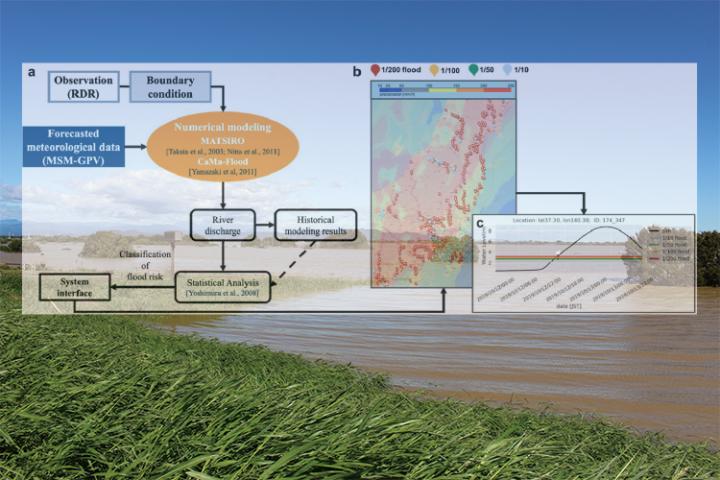A flood forecasting system is a computer model used to predict the likelihood of flooding in a particular area. The model takes into account various factors, including precipitation, streamflows, and snowpack. By predicting the likelihood of flooding, municipalities can better prepare for and respond to floods.
In Japan, a new flood forecasting system may provide early flood warnings, give people more time to prepare or evacuate, and potentially save lives.
The University of Tokyo researchers have developed a new flood forecasting system. The system provides much earlier warnings of extreme flooding events than the current systems. The study result is published this month in the journal Scientific Reports (Ma, Ishitsuka, et al. 2021).
Flooding in Japan
Floods are among the most natural calamities in Japan. Moreover, the frequency of disasters is increasing every year. The natural disaster caused Japan to lose thousands of homes and businesses and many people’s lives in the recent past.
For example, in 2019, Typhoon Hagibis swept across parts of Japan, causing severe flooding. The disaster resulted in 86 deaths and approximately 400-billion-dollar worth of property damage. In Japan, most urban areas lie within a floodplain, and typhoons can result in rapid and dangerous flooding.

An Early Warning System was Essential
Though the current forecast systems would provide accurate flooding predictions, the notice was available only a few hours before the occurrence of flooding.
Since people need more time to prepare themselves, the researchers investigated whether a newly developed flood forecast system could deliver the warning well ahead—says the lead author Wenchao Ma.
Flood Forecasting and Challenges
In Japan, the current flood predictions are based on gauged upstream water levels. The new system utilizes the land surface and river routes to simulate water movement in floodplains.
Combining with meteorological data like rainfall, temperature, wind speed, and statistical analysis, the model provides flood predictions for all rivers in Japan.
However, one of the main challenges with the forecasting system is the lack of data to validate the techniques used in the development of the system. In addition, during a disaster, collecting information about floods is challenging and can be dangerous too.
To overcome these issues, the research team monitored the location and timing of dike breaks during Typhoon Hagibis. Dike breaks provided reasonable indications of flooding locations during the typhoon.
In addition, it allowed the scientists to test the efficacy of the new forecasting system to predict possible flood locations.
Significance
“The system was very effective,” says Kei Yoshimura, senior author of the paper. The scientists found that their newly developed model accurately predicted flooding at 91% of broken dike locations.
Importantly, the system predicted floods with a 32-hour lead time – a significant improvement compared to the current system. This extra time will help people to prepare themselves for disaster preparation and make evacuation decisions.





















Happened to visit this site, loved it.
good topic, thanks
Pls write us back!
Hello, I sent an article to you on this topic, did you receive it?
Japan is a nice country.
wanted to know more about how japan weather focus system works in japan.